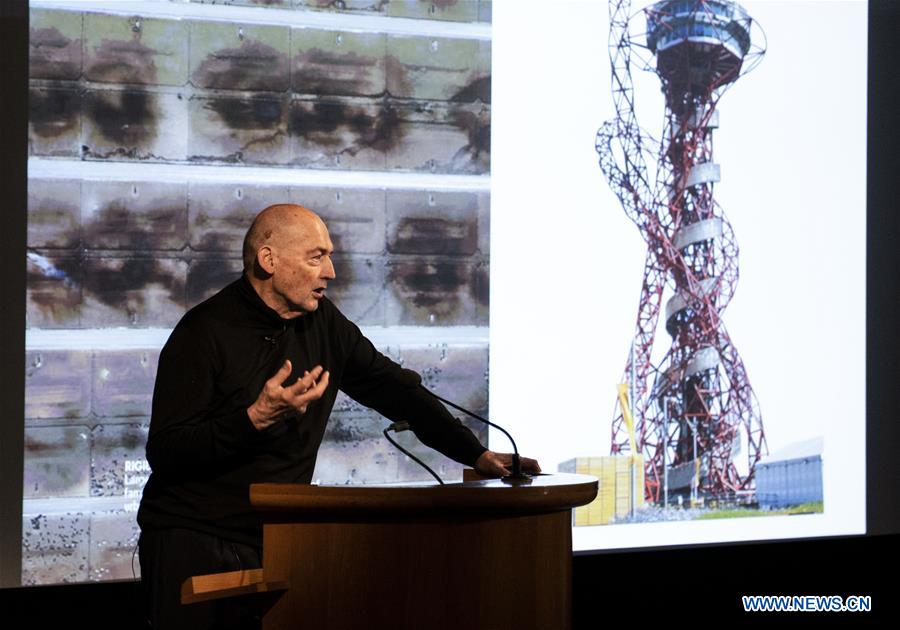
Dutch architect Rem Koolhaas delivers a remark during the preview of the "Countryside, The Future" exhibition at Solomon R. Guggenheim Museum in New York, the United States, Feb. 19, 2020. China's rural revitalization strategy is emerging as a model for the sustainable development of the world's countryside, or the 98 percent of Earth's surface not occupied by cities, Rem Koolhaas has said. (Xinhua/Wang Ying)
NEW YORK, Feb. 26 (Xinhua) -- China's rural revitalization strategy is emerging as a model for the sustainable development of the world's countryside, or the 98 percent of Earth's surface not occupied by cities, a renowned Dutch architect has said.
"China is currently one of the only countries that has a policy of keeping the countryside as a viable environment, as a place where there are new opportunities created," Rem Koolhaas told Xinhua at New York City's Solomon R. Guggenheim Museum when his exhibition -- "Countryside, The Future" opened to public last Friday.
The rural revitalization strategy, first put forward during the 19th National Congress of the Communist Party of China in 2017, aims at achieving the basic modernization of agriculture and rural areas by 2035, and the grand goal of a strong agriculture, a beautiful countryside and well-off farmers by 2050.
"I think that to some extent China is a model of what should happen also in other territories in the countryside," he said. "What we find striking, and what I think is maybe the most, the deepest reason that I have admiration for China is that they never give up trying, and continuously make an effort at improvement."
"It's not surprising that some of the (Chinese) posters that seemed like fantasies in the 80's are now kind of being realized simply because of the systematic work, systematic effort and systematic thinking of the Chinese in terms of their own future," he said. "If you're in China, you feel that people have a feeling that they are making their own future."
Koolhaas also hailed China's contribution to the sustainable rural development in other countries through its Belt and Road Initiative.
"We are showing how China deals with its own country. But we also show how China makes a contribution to other countries. We look at the railway, as part of the Belt and Road (Initiative) project in Kenya. And so we look at what is the effect of the Chinese railway in an African country," he said.
The Chinese-built Mombasa-Nairobi Standard Gauge Railway (SGR), 485 km in length, saw 1,000 days of safe operations on Feb. 24 following its launch at end of May, 2017. The modern railway replaces the meter gauge railway constructed more than 100 years ago during the British colonial rule, a marked improvement in efficiency and comfort.
The SGR technical skills report released recently indicated that localization of Kenya's SGR operations nears 80 percent, which has been achieved through technical skills transfer in 123 railway specialties. Over 1,070 Kenyan employees are capable of independently performing their duties, and 252 Kenyans work in leadership positions. A total of 29 junior locomotive drivers now work without supervision.
Koolhaas, who is known for his striking, often gravity-defying structures, including CCTV's Beijing headquarters, developed the exhibition with his research studio Office for Metropolitan Architecture (OMA) as well students at the Harvard Graduate School of Design; the Central Academy of Fine Arts, Beijing; Wageningen University, Netherlands; and the University of Nairobi.
The exhibition, which will be on show for six months until Aug. 14, is to highlight advancements in rural areas through a series of case studies that range from ancient conceptions of the countryside to internet fulfillment villages in China; to indoor dairy megafarms in Qatar and new forms of digital agriculture; to an homage to ocean space, according to the architect.



